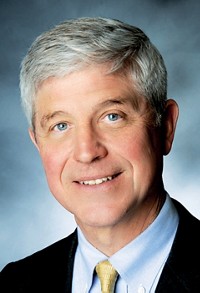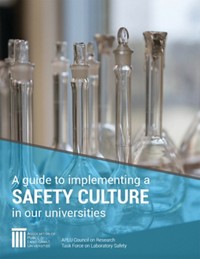Advertisement
Grab your lab coat. Let's get started
Welcome!
Welcome!
Create an account below to get 6 C&EN articles per month, receive newsletters and more - all free.
It seems this is your first time logging in online. Please enter the following information to continue.
As an ACS member you automatically get access to this site. All we need is few more details to create your reading experience.
Not you? Sign in with a different account.
Not you? Sign in with a different account.
ERROR 1
ERROR 1
ERROR 2
ERROR 2
ERROR 2
ERROR 2
ERROR 2
Password and Confirm password must match.
If you have an ACS member number, please enter it here so we can link this account to your membership. (optional)
ERROR 2
ACS values your privacy. By submitting your information, you are gaining access to C&EN and subscribing to our weekly newsletter. We use the information you provide to make your reading experience better, and we will never sell your data to third party members.
Safety
Look over Those Lab Photos
by KENNETH P. FIVIZZANI, CHAIR, COMMITTEE ON CHEMICAL SAFETY
November 29, 2004
| A version of this story appeared in
Volume 82, Issue 48
Most academic, government, and industrial laboratories have established written safety policies and procedures. New employees and students are taught to comply with these policies at the start of their lab careers. Safety is a top priority in most organizations. Although organizations expend considerable resources developing good safety programs, the photographs and videos used in official communications can display a seeming disregard of good laboratory safety practices. The most frequently observed discrepancy involves the lack of adequate eye protection.
How does it happen that well-educated professional chemists are photographed violating their own safety policies and procedures? Sometimes, a photographer's staging of a particular photo takes precedence over the good judgment of the individuals being photographed. Individual scientists may not like how they look wearing glasses. Students may not feel comfortable objecting to photographs portraying unsafe behavior. For more generic photographs, an actor may be used, and the actor will probably be unaware of the appropriate safety policies.
Why does it matter? Recall the adage "one picture is worth a thousand words." Does your organization have a promotional brochure that you give to prospective customers, clients, students, faculty, funding agencies, or visitors to your laboratory? The purpose of such a publication is to impress the recipient with the overall capabilities of your organization and the excellent work of the people who work or study there. What do other chemists think when they see photos of laboratories where employees, faculty, students, or visitors are violating standard safety policies? Publishing a photo with safety violations does not convey an image of a world-class organization at the cutting edge of science. On occasion, you will see letters to the editor of this publication objecting to the use of such photos in C&EN.
As part of their sales and marketing programs, companies spend thousands of dollars preparing ads for various products and services. A successful ad must get a reader's attention, create sufficient interest for the ad to be read, and convince a potential customer to try the product or service. A selected/staged photograph showing safety violations distracts from the intended message. Photographs portraying unsafe or unhealthy behavior have appeared in many consumer publications and advertisements. Standards for acceptable photos have changed as public awareness increases.
Years ago, it was common to see photos of prominent people and advertisements where cigarettes were being used. Automobile drivers rarely wore seat belts, and bike riders did not wear helmets in photographs. Now, general awareness of these hazards has increased to the point that such photographs are considered to be inappropriate for publication.
Back in the world of science laboratories, not all labs have the same safety policies. Biology and medical laboratories may not require eye protection. (Do the molecules behave differently depending on the discipline of the scientist?) Photographers skilled in computer technology can create new "photos" by superimposing images. If it looks as if a safety policy is violated, then the safety policy has been violated.
My message to the editors and advertisers of chemistry publications, including C&EN, is straightforward. Unless the caption or text states otherwise, we assume that lab photos were taken in a chemistry laboratory, and we expect compliance with generally accepted safety policies for chemistry laboratories.
My request to all of my chemistry colleagues is equally simple. Look over your lab photos and videos before authorizing their release or use in advertising. Because we understand the reasons behind our safety policies, chemists should determine who and what is photographed in our chemistry laboratories. Educate your lab staff not to allow any photographs or videos that show violations of your safety policies. Generally, chemistry laboratories have been and continue to be safe places to work; we should not give people any reason to doubt that.
Let's continue to be careful out there and ensure that our photos and videos accurately depict the value we place on laboratory safety.





Join the conversation
Contact the reporter
Submit a Letter to the Editor for publication
Engage with us on Twitter